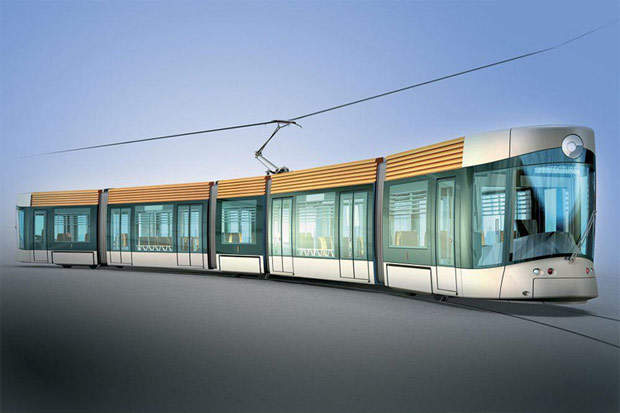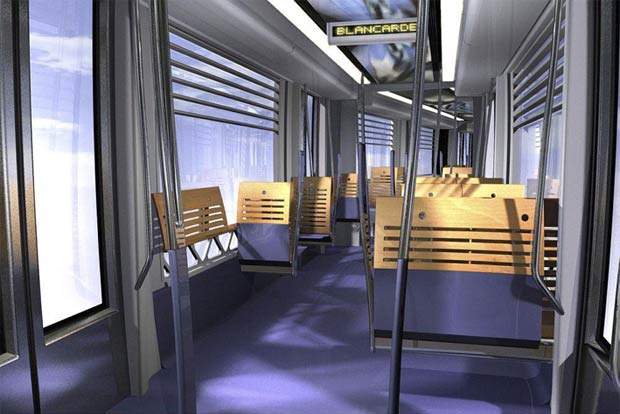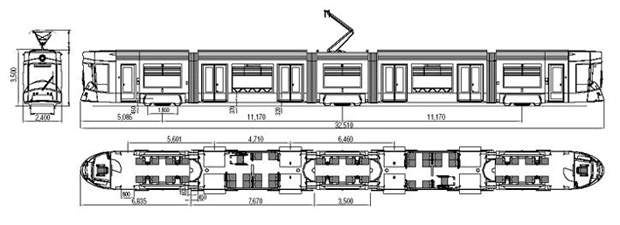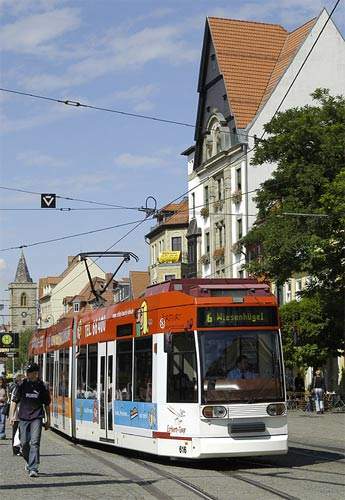France’s tramway systems went such through massive decline following the Second World War that only three city networks survived in 1966. This is now being reversed in a massive way, and Marseille in southern France (population 1.5 million) is one of those to benefit from both metro and light rail expansion.
The new metro being developed incorporates the last remaining tram line in Marseille, which was closed in 2003 to become part of the new network. The metro dates back to 1977, and 15.6km (9.75 miles) of the 19.3km (12 miles) system is underground. The last extension was completed in 1982, adding 1.1km.
THE PROJECT
The major feature of the light rail developments in Marseille is the building of two new tram lines, backed by local authority Urban Community Marseilles Provence Metropolis (CUMPM). The first of these is already being built by the TMM Consortium, which includes project supervisor SMM-Semaly.
Line 1 is 9km (5.6 miles) long, connecting Euromediterranee (Gantes) in the west of the city and Blancarde in the east. It features 12 stations at principal locations along the route and the first section has a 2007 opening date.
A second line between Noailles and Blancarde, due to open in 2008, will add 2.1km and six stations to the network. At the same time, a 0.6km extension of the first line from Gantes to Arenc takes the system length to 11.7km.
A third phase of tramway development sees the completion of the Noailles-Les Caillols line from Blancarde-Les Caillols, re-using the tunnel previously used by tramline 68 (the last in Marseille), and the addition of a southern section. It will run from Quatre Septembre to Canebiere and Castellane to Canebiere, bringing the total system length to 15km.
As they reach completion in 2011, the new tram lines will extend to parts of the city not served by the metro, which is based on the VAL system employed in Lyon and the French capital Paris, employing rubber tyres on guide rails. By 2009, this will be expanded by 2.5km from the current eastern terminus at La Timone to La Fourragere, with the inclusion of a tram/metro/SNCF main line rail interchange at La Blancarde.
In addition, Line 2 is to be extended east (on the south side of the city) from St Loup-Pagnol, with five new stations.
INFRASTRUCTURE
A large amount of construction work is underway in Marseille to provide the new infrastructure for both the tramway network above ground, and the extension of the metro underground.
Features of the metro extension include digging a new tunnel over a 15 month period, provision of 500 parking spaces to feed the metro and creation of 5,500 jobs during construction. The total cost of the short extension is €350m, invested by the CUMPM.
The tramway system is costing €468m, and while it has a maximum design speed of 70km/h, the average between stops is only expected to be 20km/h. The distance between stations will be 400m, and five will offer interchange with the metro. Service intervals will be four minutes.
The maximum gradient on the route will be 80%, and the minimum curve radius 25m. A new maintenance facility is being built to provide all the necessary repair and storage facilities.
ROLLING STOCK
An order for 40 brand new Flexity Outlook tramcars has been placed with Bombardier to provide 36 for daily service, with four in reserve. The vehicles have driving cabs at both ends, a 100% low-floor interior and the proven Bombardier MITRAC propulsion and control system, as used on tram and metro systems around the globe.
The new vehicles have a modern and spacious feel, with broad picture windows offering a good view of the city. Wooden backed seats have been chosen and provision will also be made for the disabled.
The new trams are being built to run on standard 1,435mm gauge lines operating from a 750V DC overhead electric supply. Passenger capacity is 200, with 44 seats inside. The metro fleet is also modern, and a total of 144 vehicles are formed into four car trains. The size of the fleet makes it possible to upgrade to a three minute interval service at peak times.
SIGNALLING AND COMMUNICATIONS
The TMM Consortium led by SMM Semaly is responsible for the installation of the ancillary equipment, including communications.
Installation of Bombardier MITRAC 500 propulsion and control system will ensure the trams run smoothly, both from a performance and safety point of view.
THE FUTURE
The tramway in Marseille is being built to help reduce congestion in the city centre, whilst also providing a flexible and attractive way to travel. The new trams have been designed to fit in with the maritime and Mediterranean feel of Marseille with input from CUMPM and MBD Design.
The year 2011 has been mooted as the completion date for the first three new tram lines in Marseille, whilst the metro system also has future development prospects.







